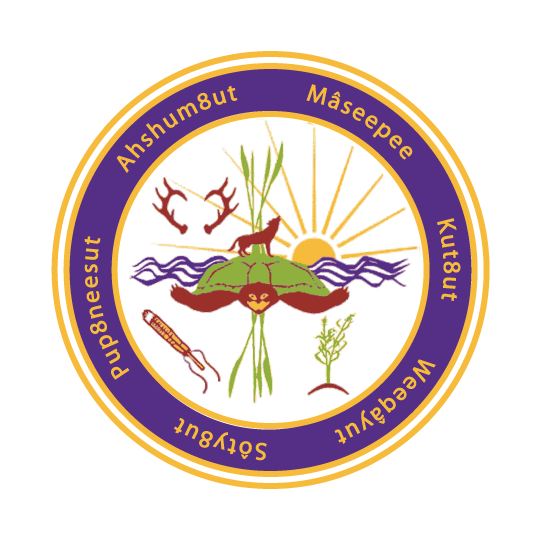Lawmakers from both parties are rebuking the Trump administration's budget cuts with the release of a $1.3 trillion spending bill that includes increases for Indian Country.
The bipartisan appropriations measure, unveiled as Washington's #SnowDay came to a close on Wednesday, clocks in at a whopping 2,232 pages. Buried within it are provisions that provides nearly $3.1 billion for the Bureau of Indian Affairs, the agency responsible for some of most critical programs on reservations, and more than $5.5 billion for the Indian Health Service, which oversees the delivery of health care to more than 2.2 million Native Americans.
Both figures represent gains from fiscal year 2017. With the bill expected to become law before the end of the week, the BIA will be getting a $204 million boost, while the IHS would see a much larger increase of $498 million from the earlier levels.
The amounts also represent a rejection of cuts that were unveiled by President Donald Trump more than a year ago. He had sought to take more than $303 million from the BIA and more than $252 million from the IHS despite calls from tribal leaders to fulfill the federal government's trust and treaty responsibilities.
Republicans and Democrats alike weren't happy with Trump's proposals but they never got around to passing 12 fiscal year 2018 appropriations bills, including the one that funds the BIA and the IHS. So they wrapped up all of the packages into one massive omnibus that took into account addditional spending levels negotiated last month.
“This omnibus appropriations bill represents thousands of hours of work, consideration, and input by members of Congress," Rep. Rodney Frelinghuysen (R-New Jersey), the chairman of the House Committee on Appropriations, said in a statement.
"These 12 bills were considered and amended in committee and on the House floor in an open and inclusive process last year, and have been negotiated in good faith by committee leaders, House and Senate leadership on both sides of the aisle, and the White House," added Frelinghuysen, who will leaving his powerful post because he is retiring from Congress later this year.
Democrats welcomed the increases for Indian programs and other domestic health, education and environmental priorities. But they weren't happy with the inclusion of nearly $1.6 billion for initiatives along the United States border with Mexico -- some of those funds can be used for “border wall system,” with the Tohono O'odham Nation and other tribes still in opposition to physical barriers through their homelands.
In a statement on Wednesday, Rep. Nita Lowey (D-New York), the top Democrat on Appropriations, called the expenditure "a waste of money and contrary to our national character.”
The Consolidated Appropriations Act of 2018 will be taken up as H.R.1625 as soon as Thursday. The House and the Senate must pass the bill and Trump must sign it into law before midnight on Saturday in order to avert another shutdown of the federal government.
"This critical funding bill fulfills our pledge to rebuild the nation’s military. It also addresses many of our national priorities, such as school safety, infrastructure, and fighting the opioid epidemic," Rep. Paul Ryan (R-Wisconsin), the Speaker of the House, said in a post on Twitter after the omnibus was released on Wednesday evening.
The government is currently operating under a continuing resolution that expires at midnight on March 24. That package represented a small victory because it extended the popular Special Diabetes Program for Indians for 2018 and 2019.
The omnibus keeps the government running through the remainder of fiscal year 2018, or through September 30.
Bureau of Indian Affairs Highlights
- $3.1 billion for the Bureau of Indian Affairs, representing an increase of nearly $204 million from 2017 levels and $575.6 million above Trump's fiscal year 2018 request.
- $165.1 million for self-governance compacts, an increase from current levels.
- $1.12 million for "new tribes" -- since 2017, seven tribes, all in Virginia, have gained federal recognition.
- $34.7 million for road maintenance, another increase.
- $19.1 million for the Indian Child Welfare Act. The 1978 law remains under heavy fire in the court system, due to repeated and protracted litigation from conservative groups.
- $40.1 million for rights protection implementation, a program area Trump sought to cut even through tribes depend on the funds to protect their treaty rights, resources and homelands.
- $914 million for Indian education, including the Bureau of Indian Education and institutions like Haskell Indian Nations University and Southwestern Indian Polytechnic Institute.
- $30.1 million for tribal courts, another area Trump sought to cut.
- $238.2 million for education construction, a significant increase from both 2017 and from Trump's request. Indian schools suffer from a backlog of $643 million in maintenance. Additionally, replacing the worst condition schools will cost billions of dollars.
- $9.2 million for the Indian loan guarantee program, which has faced internal criticism.
Indian Health Service Highlights
- $5.5 billion for the Indian Health Service, a $498 million increase from 2017 levels and a whopping $828.9 million above Trump's 2018 request.
- $2.0 billion for hospitals and health clinics, an increase from current levels.
- $962.7 million for purchased and referred care, which the IHS uses when patient have to referred to services at outside facilities.
- $49.3 million for urban Indian health.
- $717.8 million for contract support costs, or the amounts that tribes need to fund their self-determination contracts. The U.S. Supreme Court has twice ruled that the federal government must fully fund the contracts.
- $167.5 million for facilities maintenance and improvement.
- $243.5 million for facilities construction.
Division G of H.R.1625 contains the provisions affecting the Department of the Interior, which includes the BIA. The IHS, for historical reasons, is also included in the Interior appropriations section. Indian health was once part of the BIA before being transferred to the Department of Health and Human Services.




